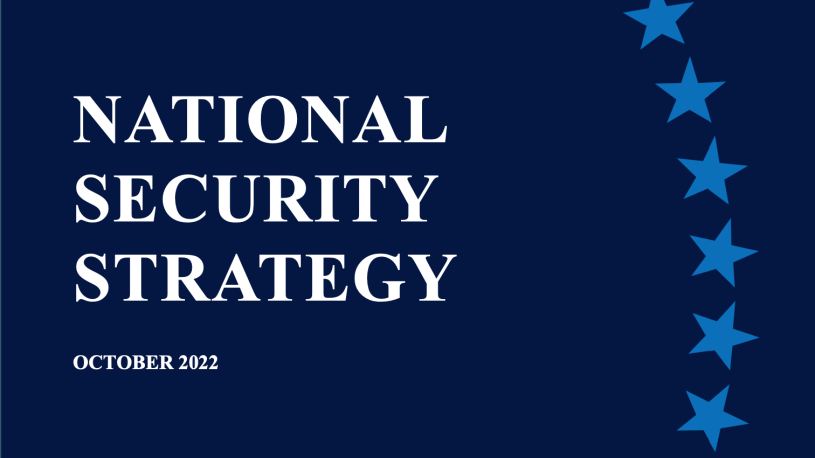The Biden-Harris Administration released their 2022 National Security Strategy on Wednesday, making clear that the People’s Republic of China (PRC) remains the top geopolitical focus of the United States.
“The PRC presents America’s most consequential geopolitical challenge,” the document states plainly. “The PRC is the only competitor with both the intent to reshape the international order and, increasingly, the economic, diplomatic, military, and technological power to do it.”
The document also notes that the Indo-Pacific region as a whole will be the main focus of the United States, asserting that “[n]o region will be of more significance to the world and to everyday Americans than the Indo-Pacific.”
“The Indo-Pacific fuels much of the world’s economic growth and will be the epicenter of 21st century geopolitics. As an Indo-Pacific power, the United States has a vital interest in realizing a region that is open, interconnected, prosperous, secure, and resilient,” it continues.
The document further explains that while Russia also poses a significant threat, “it lacks the across the spectrum capabilities of the PRC.” Trump Administration officials have expressed similar opinions about China posing a bigger threat to the United States than Russia.
The new National Security Strategy highlights three main elements of the Biden Administration’s approach toward China:
- to invest in the foundations of our strength at home –– our competitiveness, our innovation, our resilience, our democracy
- to align our efforts with our network of allies and partners, acting with common purpose and in common cause, and
- compete responsibly with the PRC to defend our interests and build our vision for the future
The Strategy also calls out China’s human rights abuses by name: “We will hold Beijing accountable for abuses –– genocide and crimes against humanity in Xinjiang, human rights violations in Tibet, and the dismantling of Hong Kong’s autonomy and freedoms – even as it seeks to pressure countries and communities into silence.”
On the issue of Taiwan, the document echoes the positions of previous administrations, noting that the United States has “an abiding interest in maintaining peace and stability across the Taiwan Strait,” “oppose[s] any unilateral changes to the status quo from either side,” and “do[es] not support Taiwan independence.” It says that the United States remains committed to its One China Policy, “which is guided by the Taiwan Relations Act, the Three Joint Communiques, and the Six Assurances.” This messaging has remained consistent in statements by State Department and White House officials.
Despite the focus on tough competition, the National Security Strategy highlighted several areas where the United States will continue to seek cooperation with China, including “climate, pandemic threats, nonproliferation, countering illicit and illegal narcotics, the global food crisis, and macroeconomic issues.”
Finally, the document emphasizes that “[w]hile we have profound differences with the Chinese Communist Party and the Chinese Government, those differences are between governments and systems – not between our people. Ties of family and friendship continue to connect the American and the Chinese people. We deeply respect their achievements, their history, and their culture.”
Although the National Security Strategy mentions Russia (71 times) more often than China (54 times), its messaging makes clear that the central focus of U.S. foreign policy over the next decade will be the global and regional challenges presented by the PRC. Other notable adversaries of the United States such as Iran and North Korea were mentioned only seven and three times, respectively.
The Strategy further cements the “pivot to Asia” initiated by the Obama Administration and continued by the Trump Administration as the U.S. and China increasingly engage in strategic competition.
Read the full National Security Strategy here.

